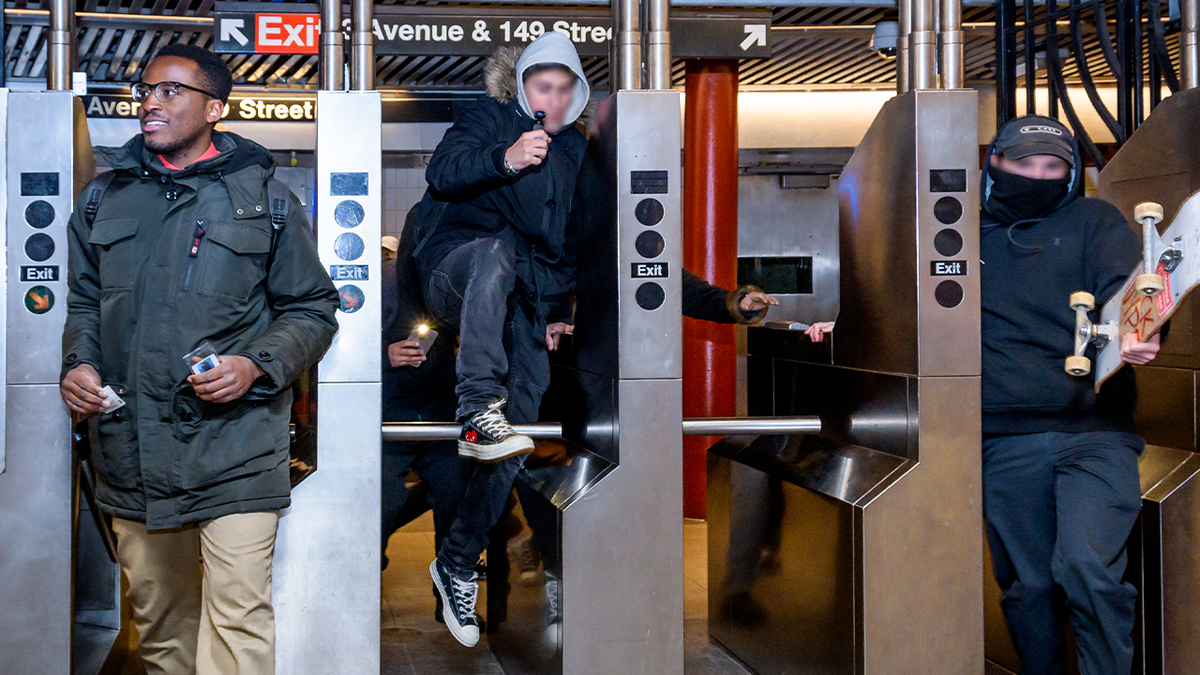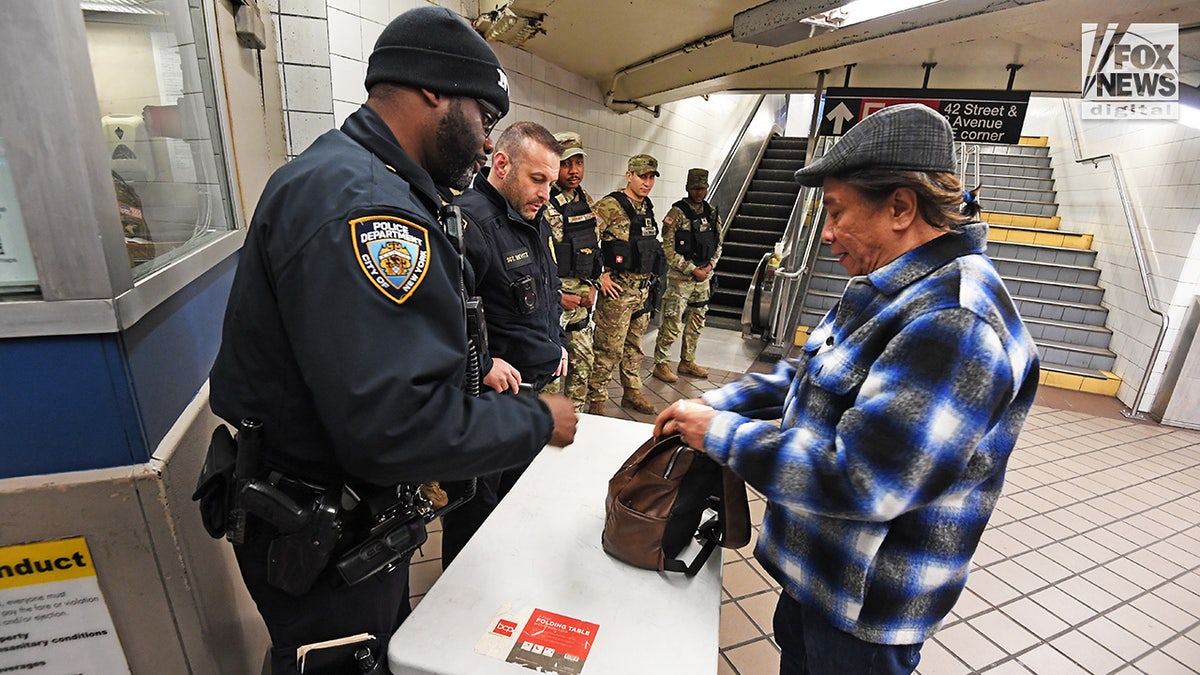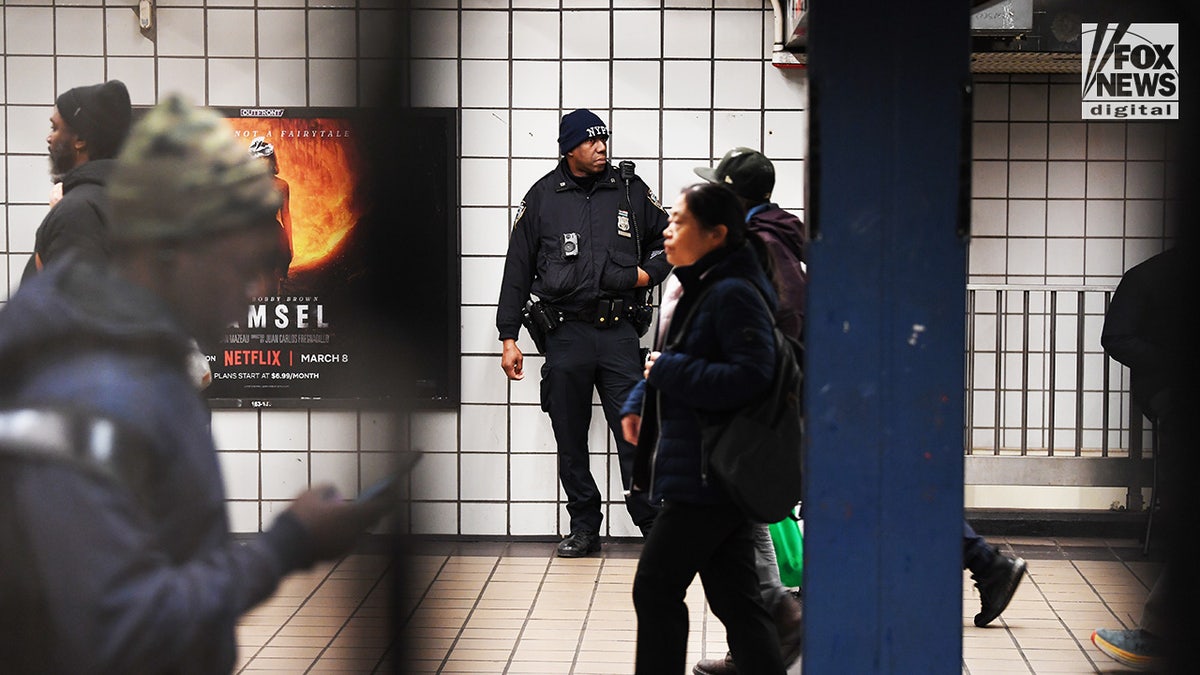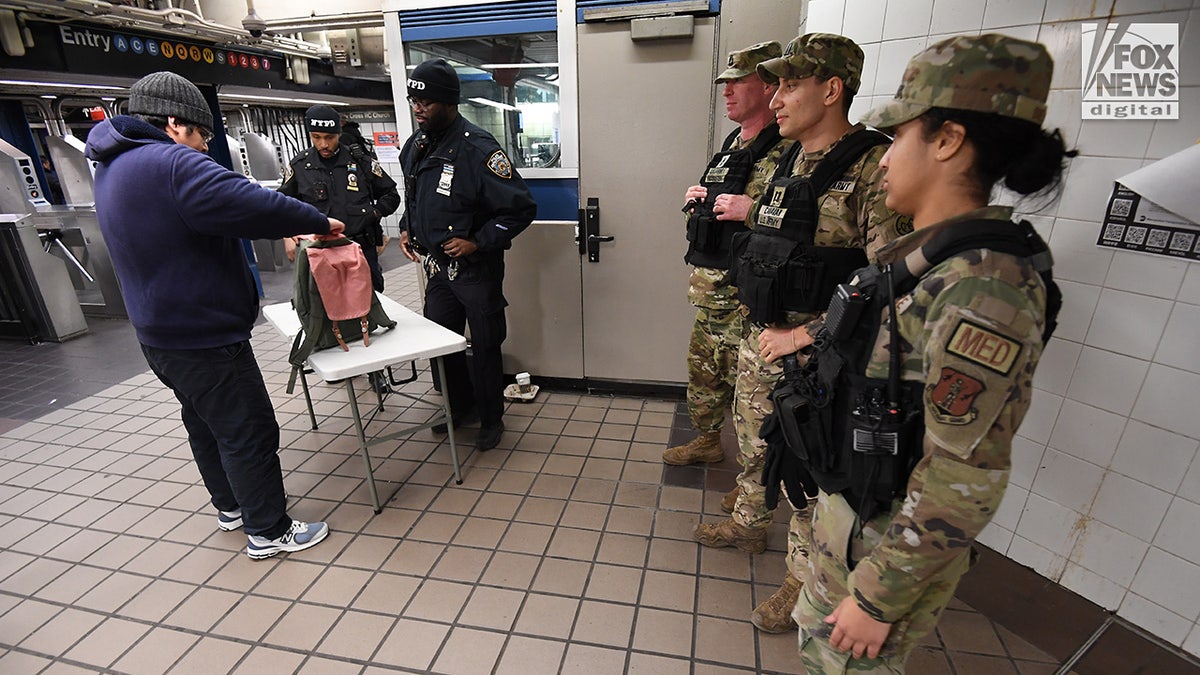Body scanners coming to NYC subway stations as city struggles with crime
Mayor Eric Adams announces that the subway system will implement body scanners to deter criminal activity.
New York City's Metropolitan Transportation Authority (MTA) is looking at paying up to $1 million for a psychologist to analyze the motivations of turnstile jumpers, saying that "historic approaches" like increased policing have had "limited success" in reversing record-high losses due to fare evasion.
Of approximately 5 million daily riders on New York City's subways and buses, about 900,000 skirt their fares, according to the MTA; 13.6% of subway riders jump the turnstile or sneak through emergency doors onto the platform, while nearly half of all bus riders skip paying.
The transit thieves may think their nonpayment is just a drop in the bucket, but it all adds up to a projected loss of $700 million this year.
"We have to win or else the system is gone," MTA CEO Janno Lieber said at a recent board meeting.
NYC CRUSHES OVER 200 SEIZED MOPEDS AND SCOOTERS AMID CRACKDOWN ON ILLEGAL VEHICLES

This subway stabbing suspect is shown jumping a turnstile at the City Hall/Brooklyn Bridge station in New York City. (NYPD/File)
In the request for proposal on its website, the MTA asks for a candidate with "research and practical behavioral change experience" who comes from one of "a variety of disciplinary backgrounds, including but not strictly limited to behavioral economics, behavioral science, organizational behavior, sociology, psychology or anthropology."
The MTA is willing to shell out $500,000 to $1 million for a six-month contract.
"Historic approaches to solving this problem have identified punitive enforcement as the antidote to rising fare evasion. Physical barriers, fare inspection, penalties and messages emphasizing the potential consequences of evading the fare are the most common tactics used," the agency wrote. "However, these costly and sometimes controversial methods have had limited success in reversing the upward trend in riders who do not pay."
After analyzing fare evaders and grouping them based on their motivations and socioeconomic backgrounds, the transit authority hopes that its new hire will come up with an "avant-garde" solution to its expensive problem.

A person is shown jumping a subway station turnstile last August. (Erik McGregor/Getty Images)
"Going beyond enforcement to change civic behavior related to transportation gets results," the agency wrote.
"In Colombia, mimes stationed at traffic intersections to reprimand errant drivers and pedestrians halved the number of traffic fatalities," the MTA wrote, citing the New York Times. "A similar program in Bolivia uses dancing costumed zebras for traffic-calming at crosswalks."
Retired NYPD inspector and Fox News contributor Paul Mauro said the proposition reads like "a parody."
"Up to a million bucks for a six-month study to tell us that people beat the fare because they can? The MTA has morphed into a 'Saturday Night Live' skit, and unfortunately, is about as funny," Mauro told Fox News Digital.
NYC SEES RISE IN HATE CRIMES, LED BY SURGING ANTISEMITISM, POLICE DATA SHOWS

The NYPD and National Guard randomly search passengers' bags at a subway station on March 11, 2024. (Matthew McDermott for Fox News Digital)
"The fare beating in the subway was a basic piece of broken windows policing, and it worked," Mauro continued. "If we do not go back to that, it will be difficult to keep up the pressure on subway crime, no matter how many members of the National Guard Gov. [Kathy] Hochul deploys."
Hundreds of National Guard troops were called in to assist with bag checks in the city's subway system earlier this spring as part of a five-point plan to improve subway safety after a series of high-profile crimes underground, including a teen girl who was beaten after a dispute and a 64-year-old man who was kicked onto the subway tracks. In March, there was a 13.1% increase in transit crimes compared to that month in 2023, according to NYPD data.
According to the "Broken Windows" theory of policing, low-level crimes like vandalism, public intoxication and fare evasion create an atmosphere that encourages more serious crimes and disorder. Cracking down on turnstile jumpers and other minor criminals was a key part of former Mayor Rudy Giuliani's crime-reduction strategy in the 1990s.
"The fare beating in the subway was a basic piece of broken windows policing, and it worked."
That theory was supported when Fox 5 New York tagged along with the NYPD's Transit Response Team, which targets transit recidivists – those who repeatedly commit crimes on public transit after evading fares. Police recovered a stolen diamond watch and a MacBook from one man they apprehended for entering the subway without paying.
An NYPD spokesperson told Fox News Digital that arrests for fare evasion are up 88.5% year-to-date and that officers have issued 53,000 summons. In the process, the spokesperson said, 16 firearms have been recovered from arrested fare evaders this year.
NEW YORKERS RAIL ON LOSING BATTLE AGAINST CRIME AFTER GOV HOCHUL DISPATCHES NATIONAL GUARD

A NYPD officer patrols a subway station on March 11, 2024. (Matthew McDermott for Fox News Digital)
"Fare evasion is directly linked to crime and public perception of safety within the subway system," an NYPD spokesperson told Fox News Digital. "While not all fare evaders are criminals, time and time again, we see that nearly all criminals evade the fare. Further, it's not fair to the paying rider."
Regarding the MTA's potential new approach, the spokesperson said the department "welcome[s] strategies that complement [their] efforts and encourage riders to enter the system lawfully."
MTA spokesperson Kayla Shults said the agency "is advancing a holistic approach to address fare evasion that the blue-ribbon panel recommended in 2023, including efforts to reinforce the importance of paying your fare and making it easier for customers to pay."
"Fare evasion is directly linked to crime and public perception of safety within the subway system."
Criminal and police psychologist Dr. Katherine Kuhlman told Fox News Digital that although the MTA's new strategy may seem "kind of silly" at first glance, other subway systems worldwide have conducted similar studies and gleaned valuable data.
A Melbourne, Australia, study carried out in 2015 categorized fare evaders into four types: the "Accidental Evader" who may have misread signs or made another mistake; the "It's Not My Fault" evader who doesn't pay because they're economically disadvantaged; the "Calculated Risk Taker" who will evade fares whenever they see the opportunity; and the "Career Evader" who takes pride in never paying the toll.
About 68% of Melbourne's fare evasion losses, which totaled $80 million per year, were attributed to the last two categories, according to the study, which was conducted by Professor Graham Currie, director of the Public Transport Research Group, and Alexa Delbosc from Monash University.
NEW YORK CITY TO DEPLOY 800 OFFICERS TO COMBAT FARE EVASION IN SUBWAY SYSTEM

Members of the NYPD and National Guard conduct random bag searches in New York City’s subway system on March 11, 2024. (Matthew McDermott for Fox News Digital)
Public Transport Victoria began marketing activities highlighting the issue of "recidivists" and launched more ticket checks carried out by plainclothes police officers, who were harder to spot by fare evaders. This brought their fare evasion rate from 12% to 5%, according to the study.
"A psychologist who is researching and trying to determine the behavior of someone who evades fares isn't trying to therapize or make them feel better about evading the fare – the reason would be to find a solution," Kuhlman said. "We study all types of criminal behavior – serial killers, rapists, shoplifters – and look at the root causes. When you look at it ... this is no different."
She pointed out that $1 million is a small cut from the MTA's annual budget, which is projected to be $19.379 billion, according to the agency, and would be split between a large team of researchers: "There's no way that one person is getting the sheer amount of data on such a large transit system in six months without having a team."
"We have to win or else the system is gone."
Analyzing the users of the world's largest subway system would be no small task. Researchers would need to amass a sample size that matched the socioeconomic, racial, cultural and borough breakdown of the city.
Surveying rushing commuters will also be a challenge, Kuhlman said.
CLICK HERE FOR THE FOX NEWS APP
"Everybody's always in a rush when they're trying to use transportation. [The researchers will need to be] very specific about the data that they're needing so that people can be responsive," she said.
"This is pennies on the dollar if you're looking at what the losses are," Kuhlman said. "I understand the reaction of 'What is a shrink going to do, tell everyone to be happy?' But no, there's so much more that underlies it than that."






















